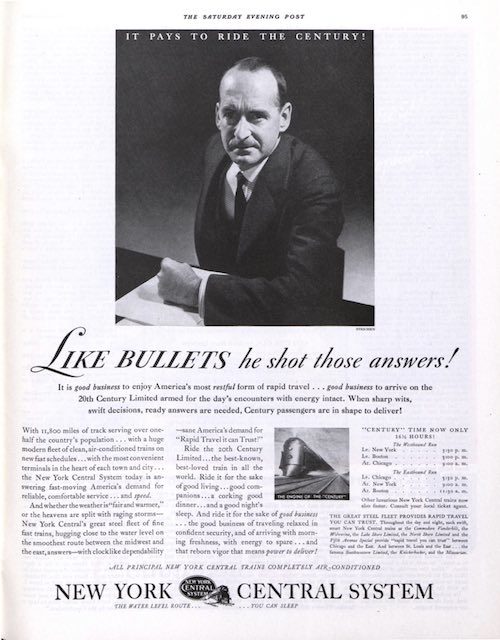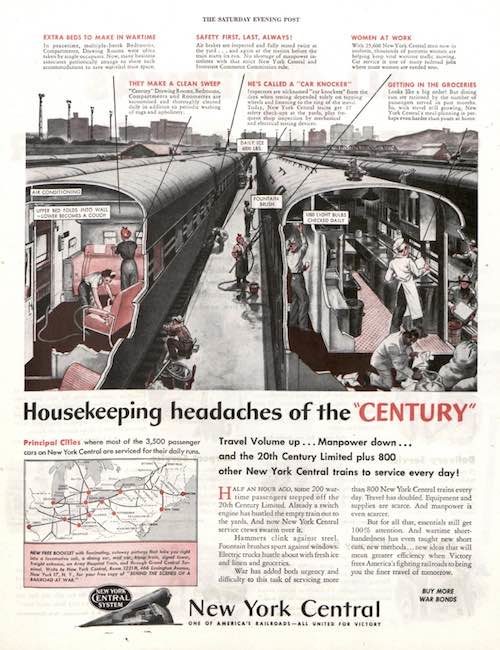Vintage Ads: Remembering the 20th Century Limited
Once considered the greatest train in the world, The 20th Century Limited made its last run from New York to Chicago fifty years ago, on December 2, 1967.
When it departed from New York’s Grand Central Terminal at 6:00 PM that Saturday night, it was obvious why the train was ending 65-year run. The once prestigious train, which for decades had been the first choice for the rich and famous on their way to New York, was only half full.
Passengers who boarded the train would have noticed that memento hunters had been at work. The iconic red-and-gray curtain that hung over the Limited’s gate had already been stolen. Menus in the dining car were quickly disappearing. The police were guarding the train’s famous 100-yard red carpet, with its distinctive art nouveau logo, to ensure it didn’t disappear as well. It helped distinguish the Limited from every other train pulling out of Grand Central and it originated the term “red carpet treatment.”

By 1911, the New York Central Railroad could afford a full page ad in the Post, boasting that it could take passengers between New York and Chicago in 18 hours.

Passengers enjoyed luxurious décor and gourmet dining that featured lobster and filet mignon. Cocktails were served in three club cars, though employees claimed that half the drinks were consumed in private rooms or suites.

Like everyone else, the railroads saw revenues fall during the Depression. Where the Limited had once presented itself as the fastest and most luxurious route, in 1936 it advertised itself as the most practical. Its commercial passengers, they argued, were so well rested after 16 hours of travel, they were better prepared for business.

The Limited could also be the ultimate men’s club, a place for male business or bonding.

In 1938, the New York Central rolled out its ultra-modern streamliner.

The streamliner featured a new observation lounge and passenger compartments with individual air-conditioning and bathrooms.

The railroad assured passengers that, despite losing employees to the war, there was no drop in the quality of service on the Limited.

In 1948, the Limited got another new look from the same designer who created the streamliner. The new Limited switched to diesel power and its modernized furnishings now included phone service on board.

The Limited liked to emphasize its “Water Level Route” that followed the shore of Lake Erie and the Hudson River. It was a more restful ride, the railroad argued, than the route taken by its competitor, The Pennsylvania Railroad, which had to cross mountains.
Train travel declined after World War II, and air travel started becoming more affordable. When the New York Central decided to end the legendary rail service, many of its long-time passengers took one last ride. The last run of the Limited marked the end of an era.